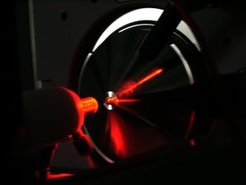Roman Körner, PhD
Mass spectrometry

Efficient protein folding is essential for cell viability and this process is aided by a complex interplay between various specialized proteins (chaperons) and protein complexes. The accumulation of misfolded proteins is an important feature of many neurodegenerative diseases (such as Alzheimer, Parkinson, and Huntington) and plays a central role in aging mechanisms. Importantly, the protein folding machinery is not static but needs to adapt to various cellular and environmental conditions. Using mass spectrometry based strategies, our work aims at the characterization of complexes involved in protein folding and the unraveling of their regulation on the transcriptional and post-translational level. Recently, we developed a pulse-proteolysis based method for the characterization of protein folding states on a proteome-wide level.
Mass spectrometry based proteomics analyzes the protein complements in complexes, cells, tissues and organisms. The goal of proteomics is not only to determine the identity of proteins but also their quantities, localization, dynamics, post-translational modifications, and interaction partners. Proteomics can be carried out at the whole cell or tissue level but, often more interestingly, may be focused on specific and functionally relevant cellular substructures or complexes. In our group we use two Q-Exactive orbitrap electrospray-ionization mass spectrometers coupled to nanoHPLC systems, which allow the efficient separation of complex peptide mixtures at very low flow rates (200 nL/min.). The orbitrap mass spectrometer combines the advantageous features of high sensitivity, resolution, mass accuracy and sampling speed, and is therefore very well suited for all types of proteomics analyses. The development, adaption, and refinement of proteomics techniques for protein folding research are important goals of this group.
People involved in the work
Albert Ries, Technician
